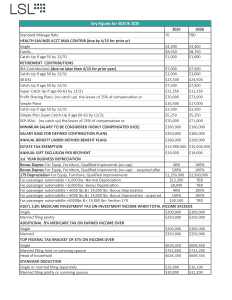Selling a home can result in a significant capital gains tax liability, but there are several ways to reduce this burden. Here are four effective strategies to minimize capital gains on the sale of your home:
- Qualify for the Home Sale Exemption
- Deduct the Purchase Cost of the Home
- Deduct Closing Costs and Fees from the Sale of a Home
- Deduct Any Major Improvements Made to the Home
1. Qualify for the Home Sale Exemption
One of the most effective ways to reduce capital gains on the sale of your home is to qualify for the home sale exemption. The IRS provides an exclusion for homeowners, allowing them to exclude up to $500,000 (for married couples filing jointly) or $250,000 (for single filers) of capital gains from the sale of their primary residence. To qualify, you must meet certain criteria related to ownership, use, and timing.
Ownership and Use Test
To qualify for the home sale exemption, you must pass both the ownership and use tests:
- Ownership Test: You must have owned the home for at least two out of the five years preceding the date of sale.
- Use Test: You must have used the home as your principal residence for at least two out of the five years preceding the date of sale.
These two years do not have to be continuous, and they do not have to overlap.
Special Circumstances and Partial Exclusions
Certain circumstances may allow for a partial exclusion if you do not meet the full two-year requirements. These include:
Change of Place of Employment: If you need to sell your home due to a job change that qualifies as a long-distance move.
Health Reasons: If you need to sell your home for health-related reasons.
Unforeseen Circumstances: These might include events like: natural disasters, death, divorce, or multiple births from the same pregnancy.
In these cases, you may be eligible for a prorated exclusion based on the time you owned and used the property as your principal residence.
2. Deduct the Purchase Cost of the Home
When calculating your capital gain on the sale of your home, the purchase cost—or basis—of your home is a crucial factor. The basis is the amount you paid for the home plus any additional costs and adjustments.
3. Deducting Closing Costs and Fees from the Sale of a Home
When you sell your home, certain closing costs and fees can be deducted from the sale price to reduce your taxable capital gain. These costs are added to the basis of your home, effectively lowering your gain. The IRS allows several types of fees and costs to be included in your basis:
Eligible Closing Costs
- Abstract Fees: Fees for the abstract of title.
- Charges for Installing Utility Services: Costs incurred for connecting your home to utilities.
- Legal Fees: Legal expenses related to the title search and preparation of the sales contract and deed.
- Recording Fees: Costs for recording the purchase with local authorities.
- Survey Fees: Fees for land surveys required for the sale.
- Transfer or Stamp Taxes: Taxes paid on the transfer of the property title.
- Owner’s Title Insurance: Insurance purchased to protect against claims on the title.
Ineligible Closing Costs
Not all closing costs can be deducted. For example, you cannot include:
- Insurance Premiums: Fire and casualty insurance.
- Pre-closing Occupancy Costs: Rent or utility charges for living in the house before closing.
- Mortgage-related Fees: Mortgage insurance premiums, loan assumption fees, credit report costs, and lender-required appraisals.
- Points: Discount points or loan origination fees for obtaining a mortgage.
Understanding which fees can be included in your basis is crucial for accurately calculating your capital gains.
4. Deducting Major Improvements Made to the Home
Adding the cost of major improvements to your home’s basis can significantly reduce your capital gains tax. However, distinguishing between repairs and improvements is essential. Here’s a guide to what qualifies as a major improvement:
Qualifying Improvements
Improvements must add value to your home, prolong its useful life, or adapt it to new uses.
Examples include:
- Additions: New bedrooms, bathrooms, decks, garages, porches, and patios.
- Lawn and Grounds: Landscaping, driveway installation, walkways, fences, retaining walls, and swimming pools.
- Systems: Upgrades to heating systems, central air conditioning, furnaces, duct work, humidifiers, vacuum systems, security systems, and sprinkler systems.
- Exterior Enhancements: Installing storm windows and doors, new roofing, siding, and satellite dishes.
- Insulation: Adding insulation to attics, walls, floors, pipes, and duct work.
- Plumbing and Electrical: Upgrading plumbing systems, septic systems, water heaters, and electrical wiring.
- Interior Upgrades: Installing built-in appliances, modernizing kitchens, adding fireplaces, and wall-to-wall carpeting.
Non-Qualifying Improvements
Certain expenses do not qualify as improvements, such as:
- Repairs and Maintenance: Routine maintenance like painting, fixing leaks, or replacing broken hardware.
- Temporary Additions: Improvements with a life expectancy of less than one year.
Special Considerations
Improvements performed as part of a larger remodeling or restoration project may qualify. For instance, replacing windows as part of an extensive home renovation can be included in your basis.
Practical Example
Let’s consider a practical example to illustrate these deductions. Suppose you purchased a home for $300,000 and sold it for $600,000. You invested $50,000 in major improvements and incurred $10,000 in eligible closing costs. Your new basis would be:
- Original Purchase Price: $300,000
- Improvements: $50,000
- Closing Costs: $10,000
- Total Basis: $360,000
Your capital gain would be the sale price minus the total basis:
- Sale Price: $600,000
- Total Basis: $360,000
- Capital Gain: $240,000
In addition to that, if you qualify for the $500,000 or $250,000 Home Sale Exemption, your capital gain would be $0 (it can’t go below zero as you cannot take a loss on the sale of a personal home).
By properly deducting eligible closing costs and major improvements, you reduce your capital gain, potentially lowering your tax liability significantly.
Conclusion
Understanding how to leverage these deductions can save you a substantial amount in taxes when selling your home. Be sure to keep detailed records of all eligible expenses and consult with a tax professional to ensure you maximize your deductions and comply with IRS regulations.




